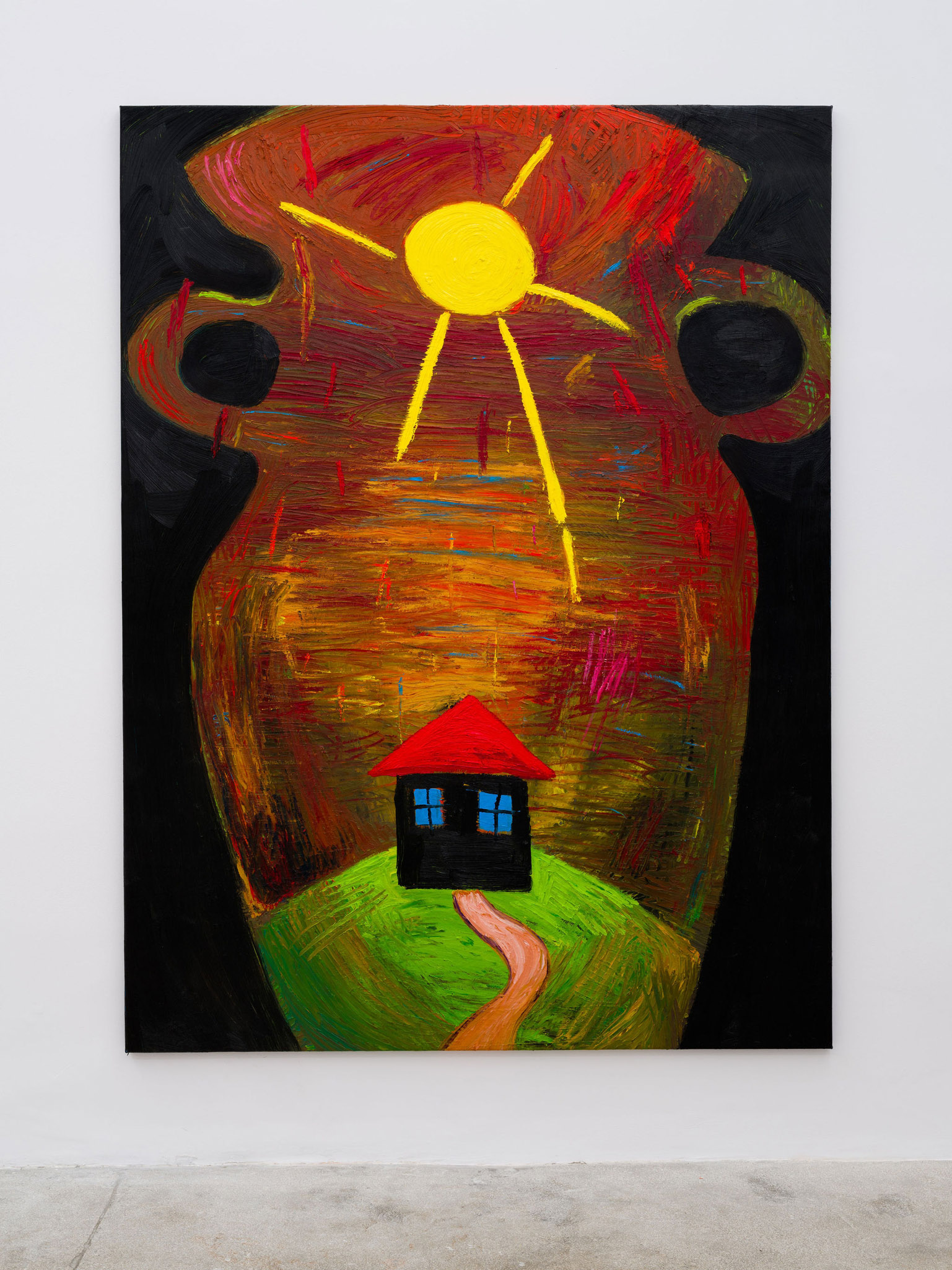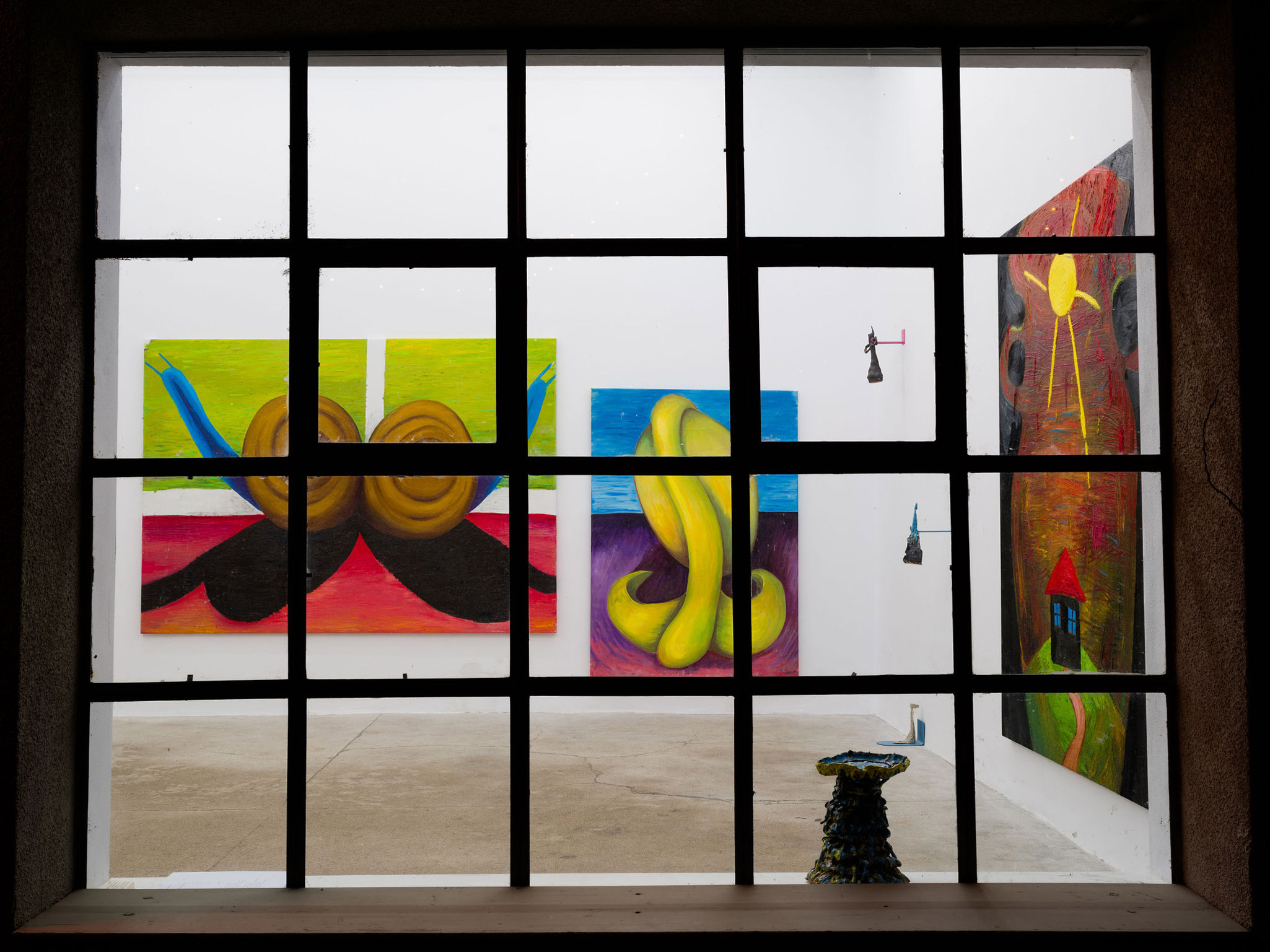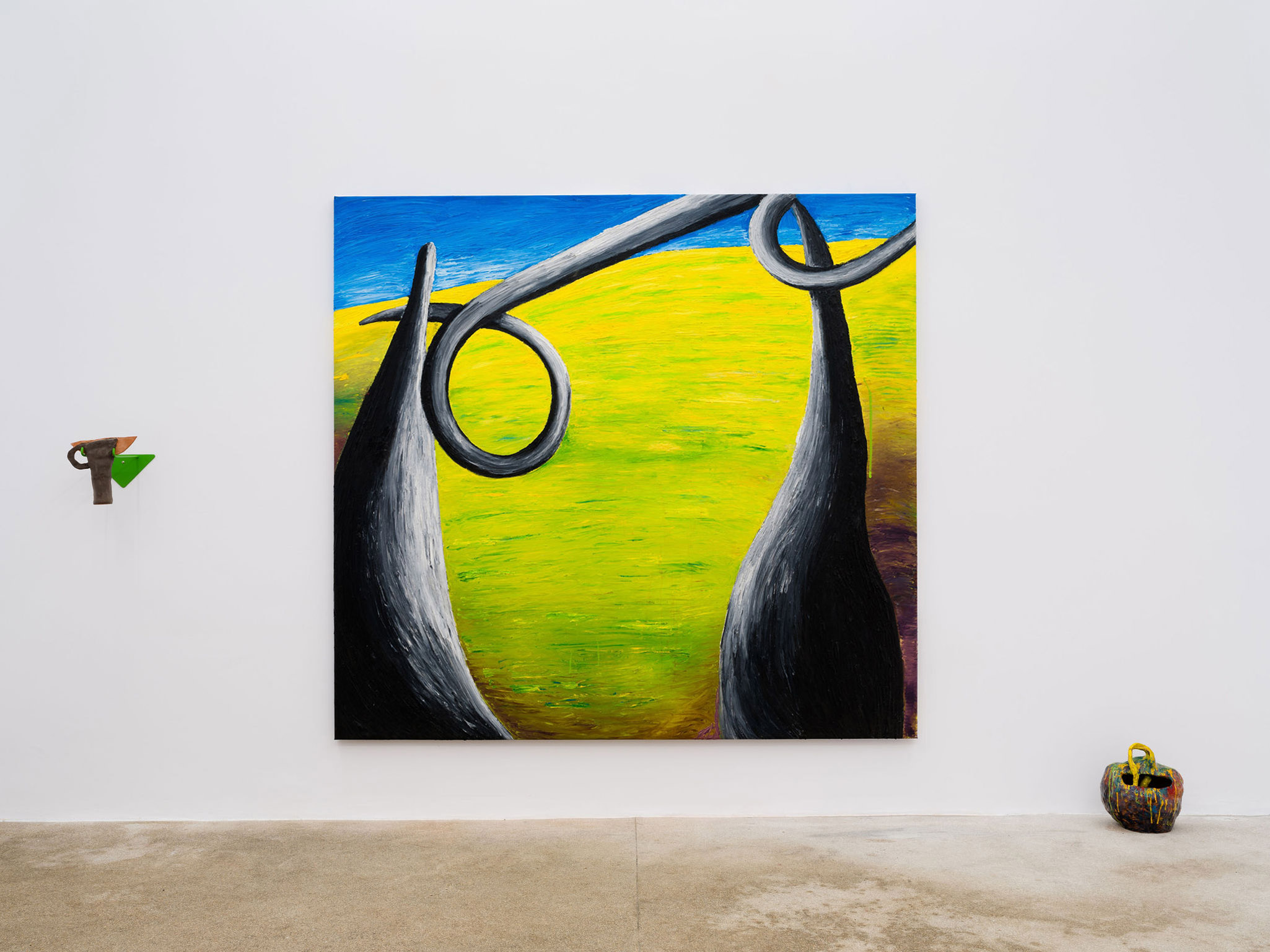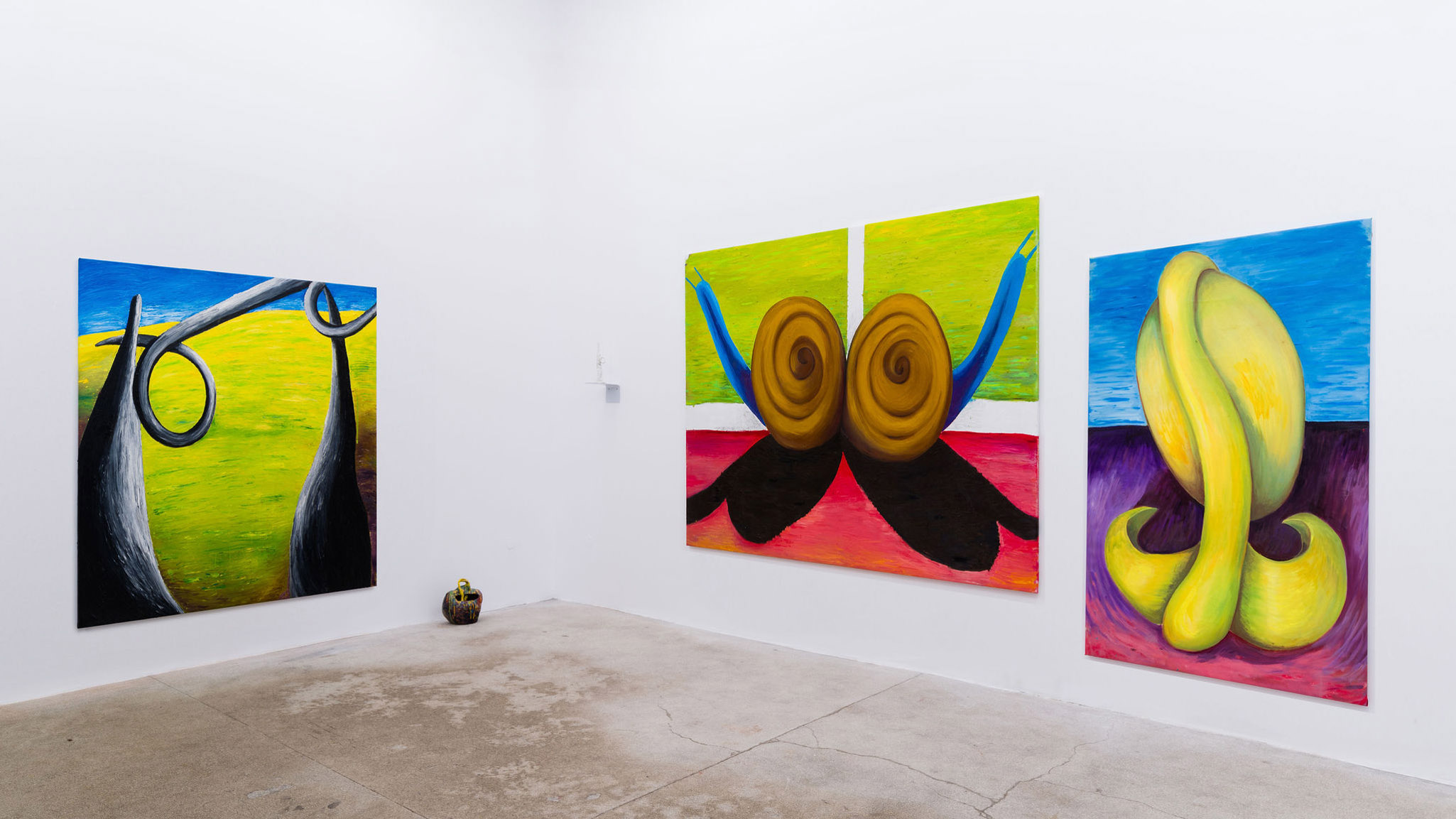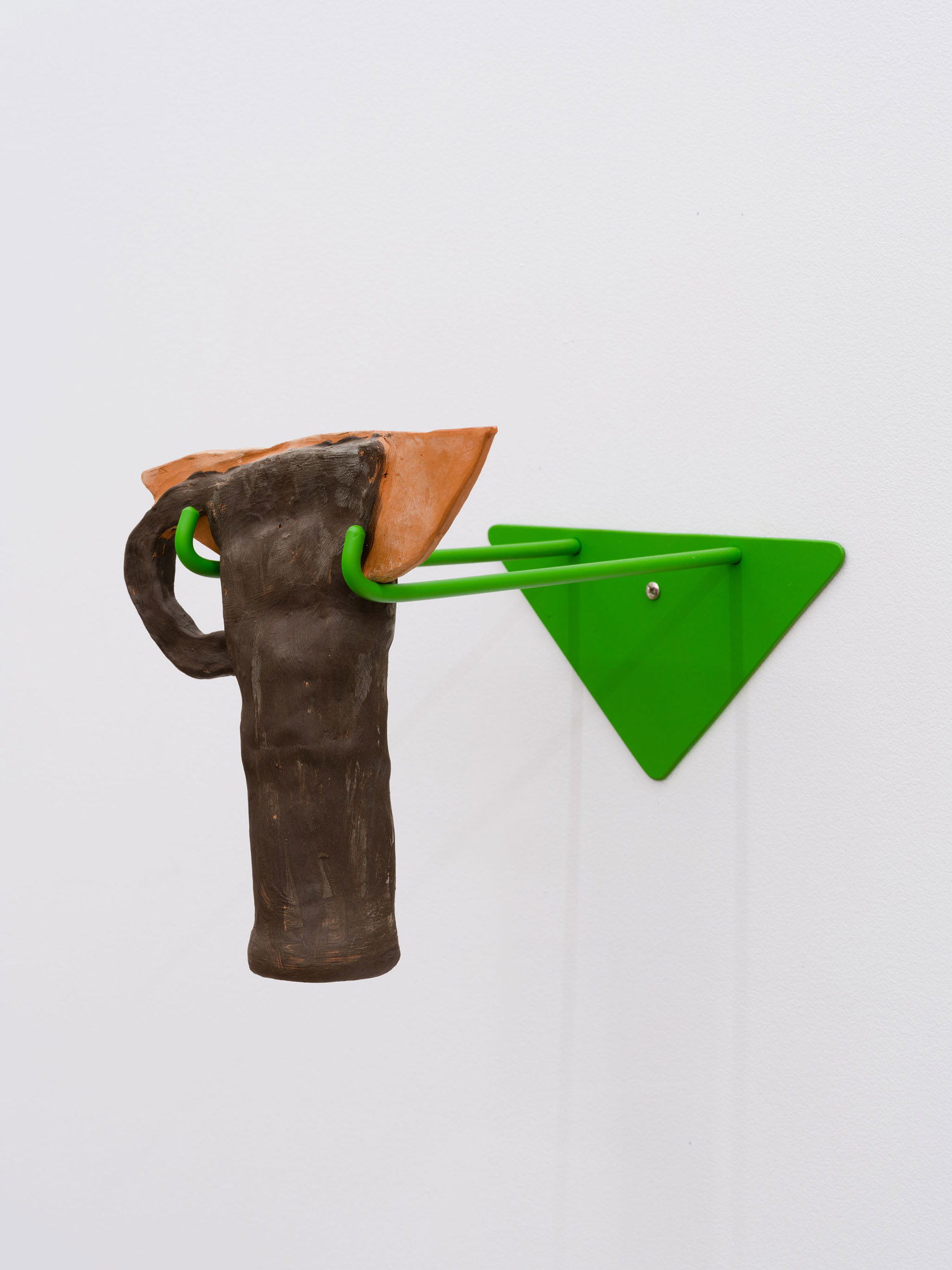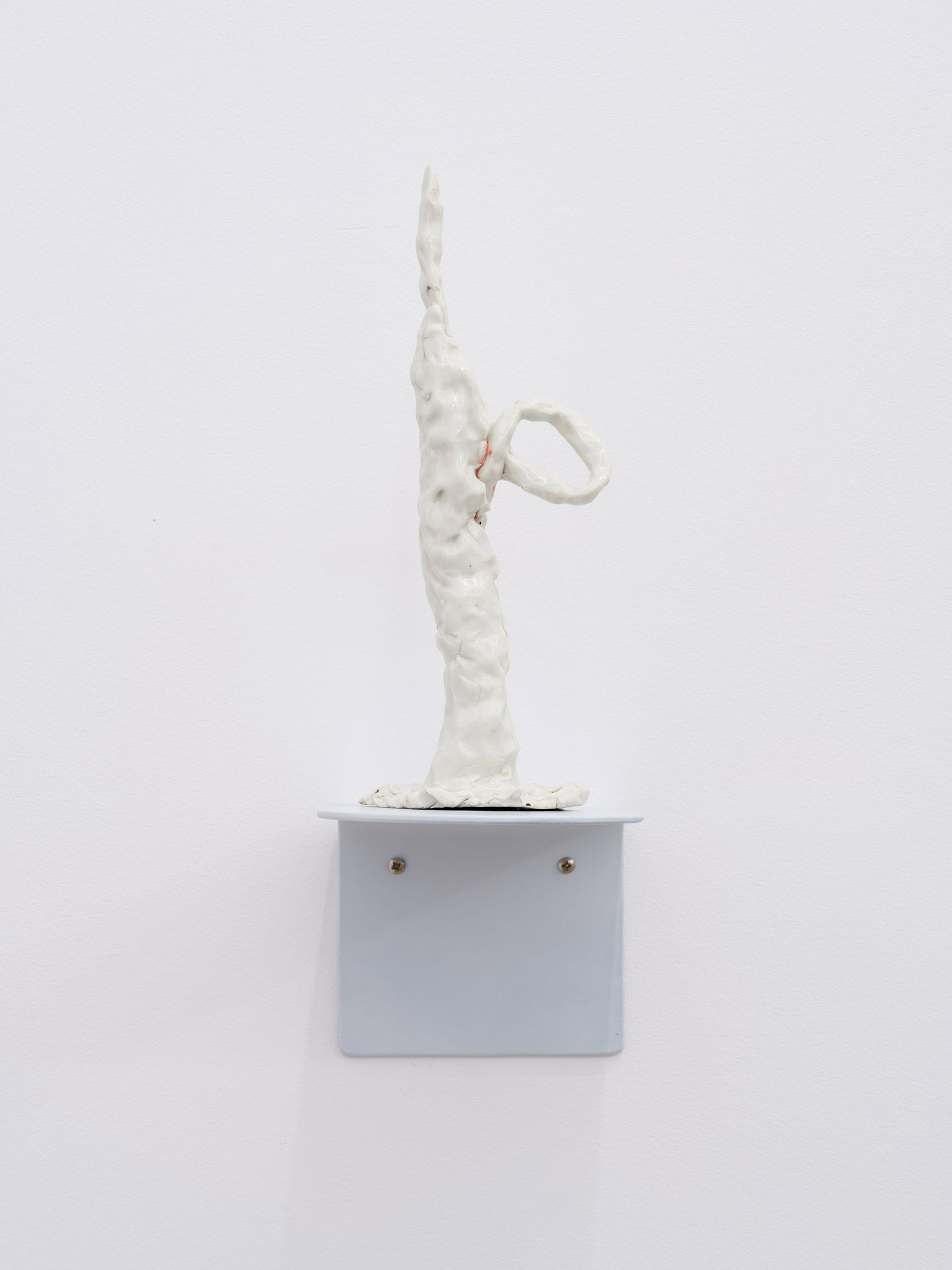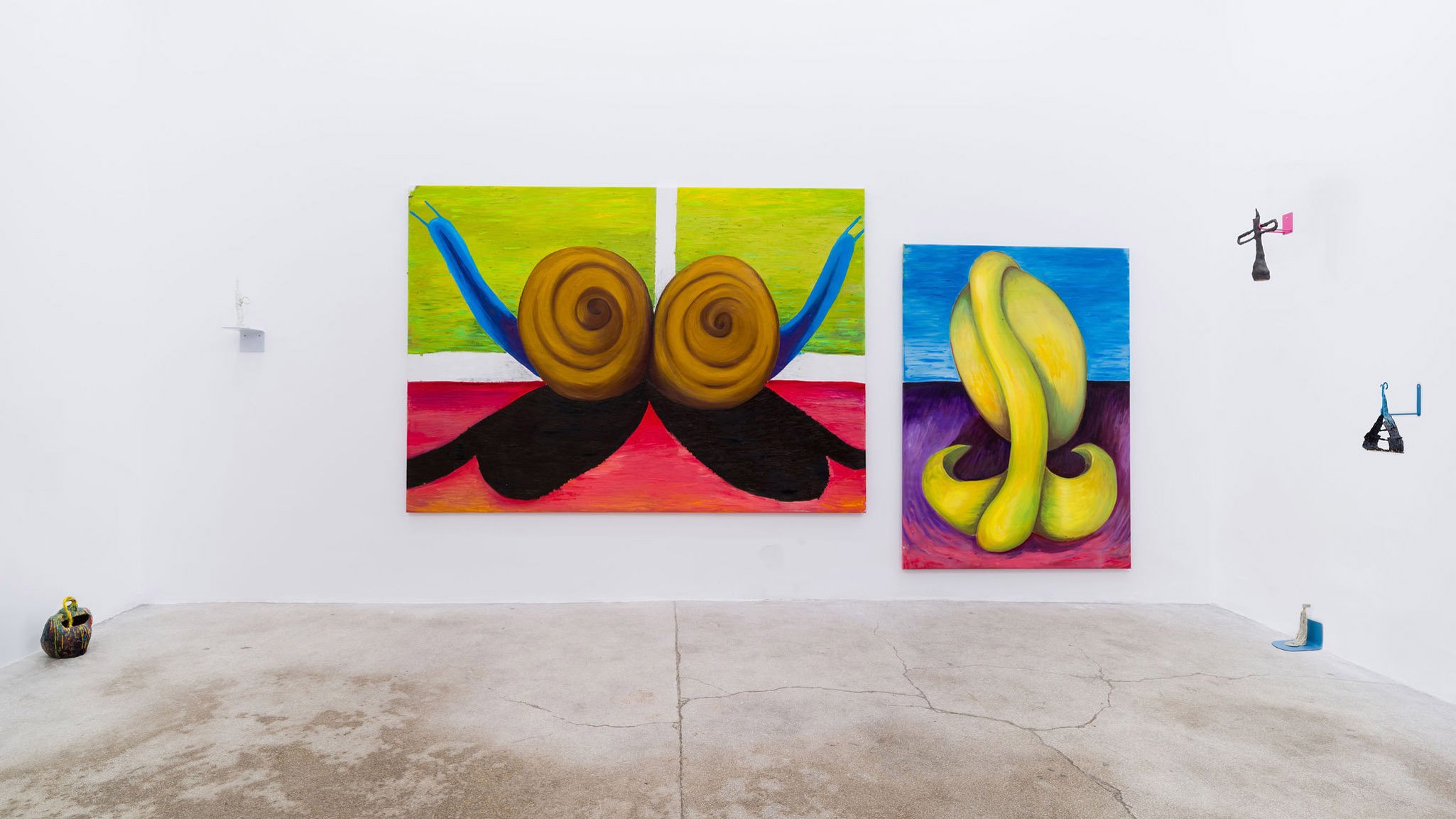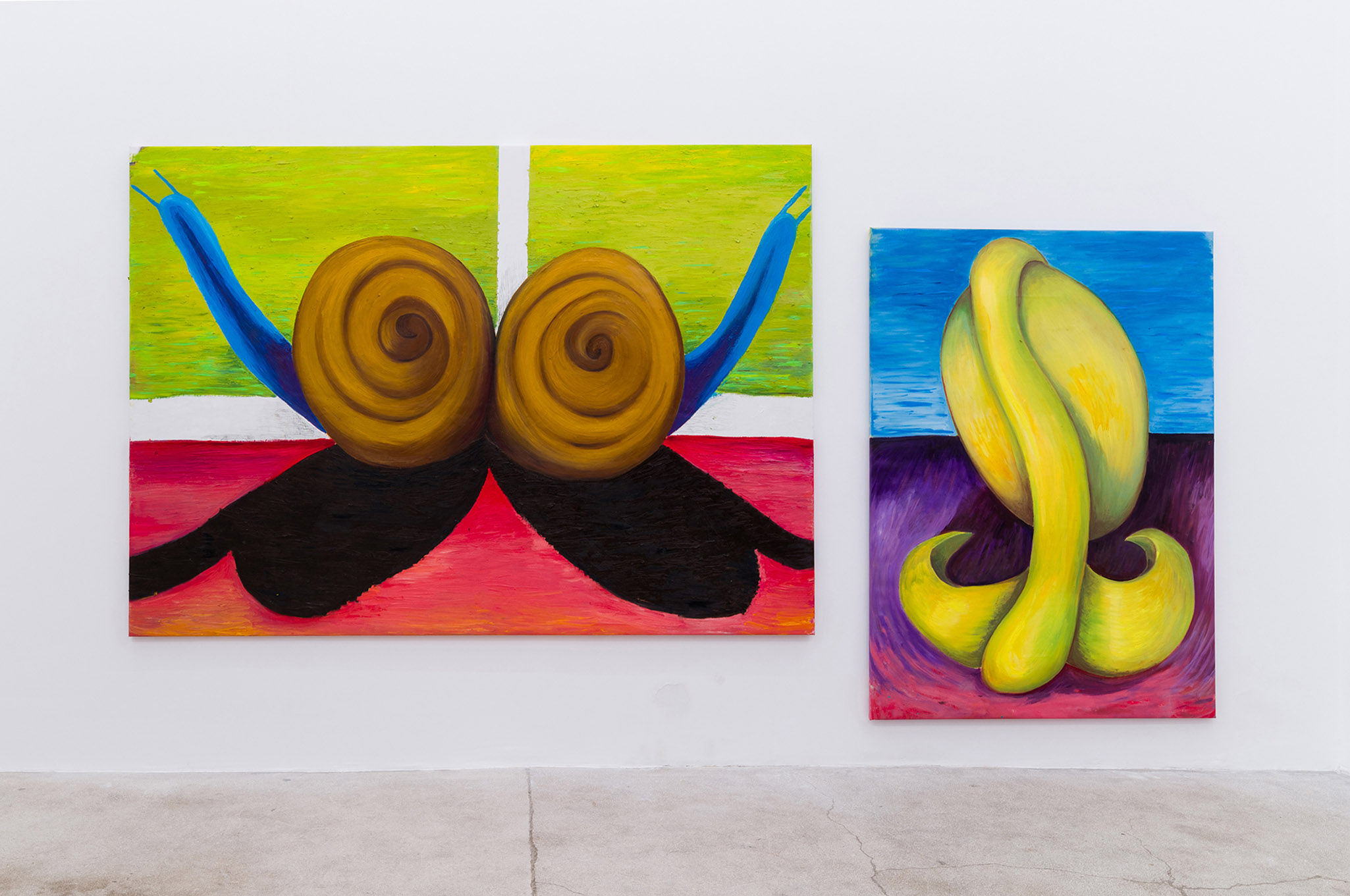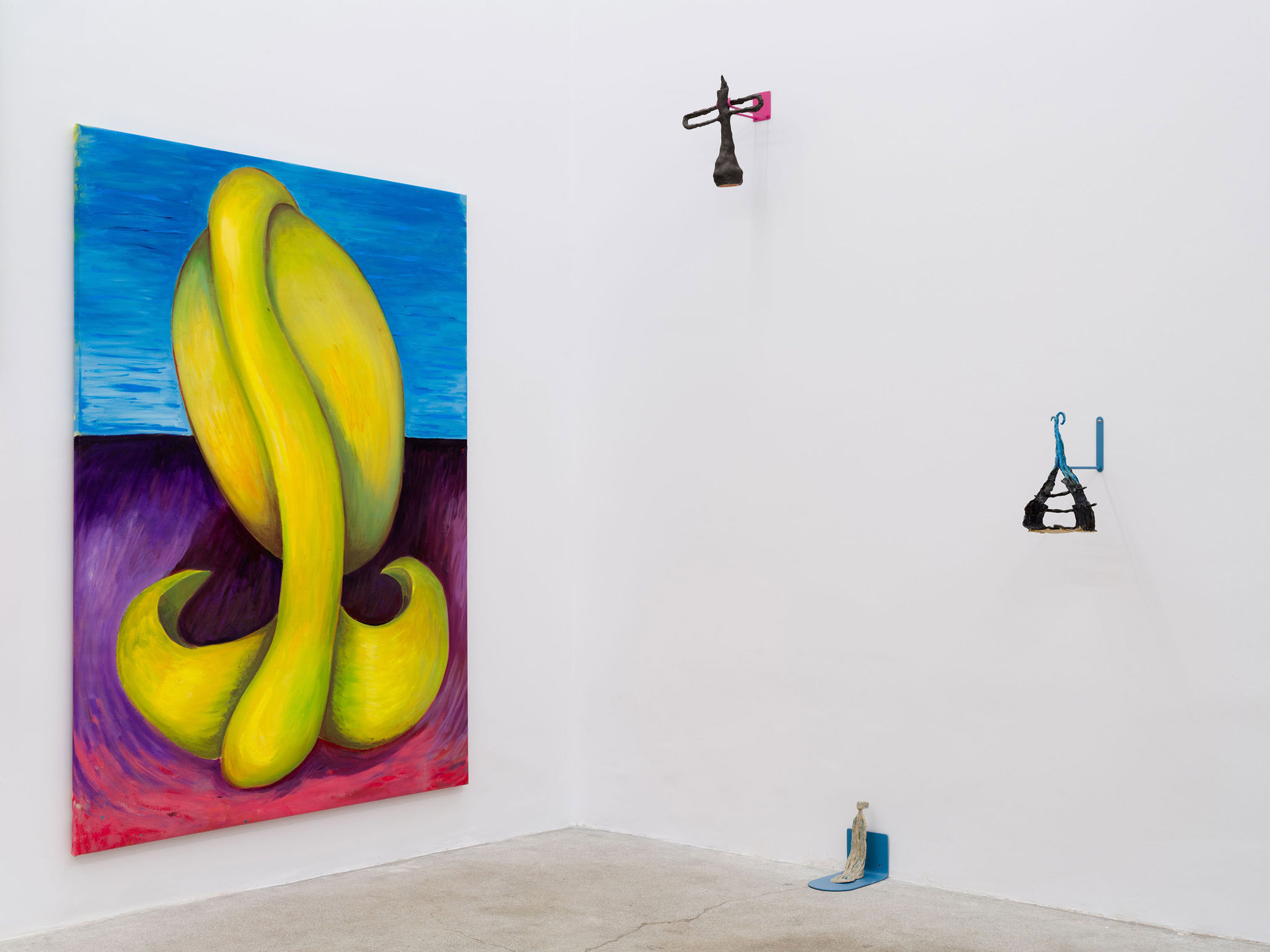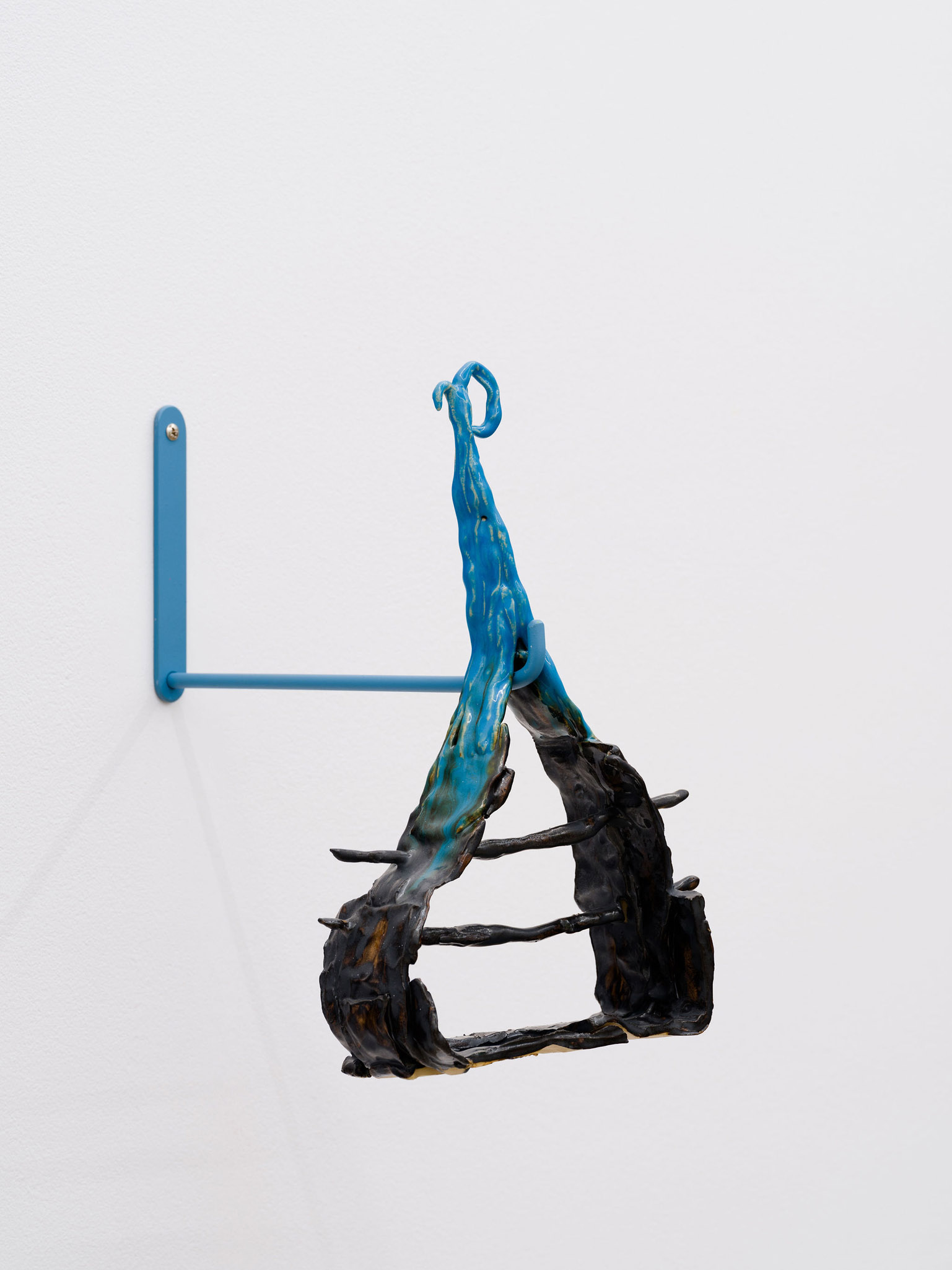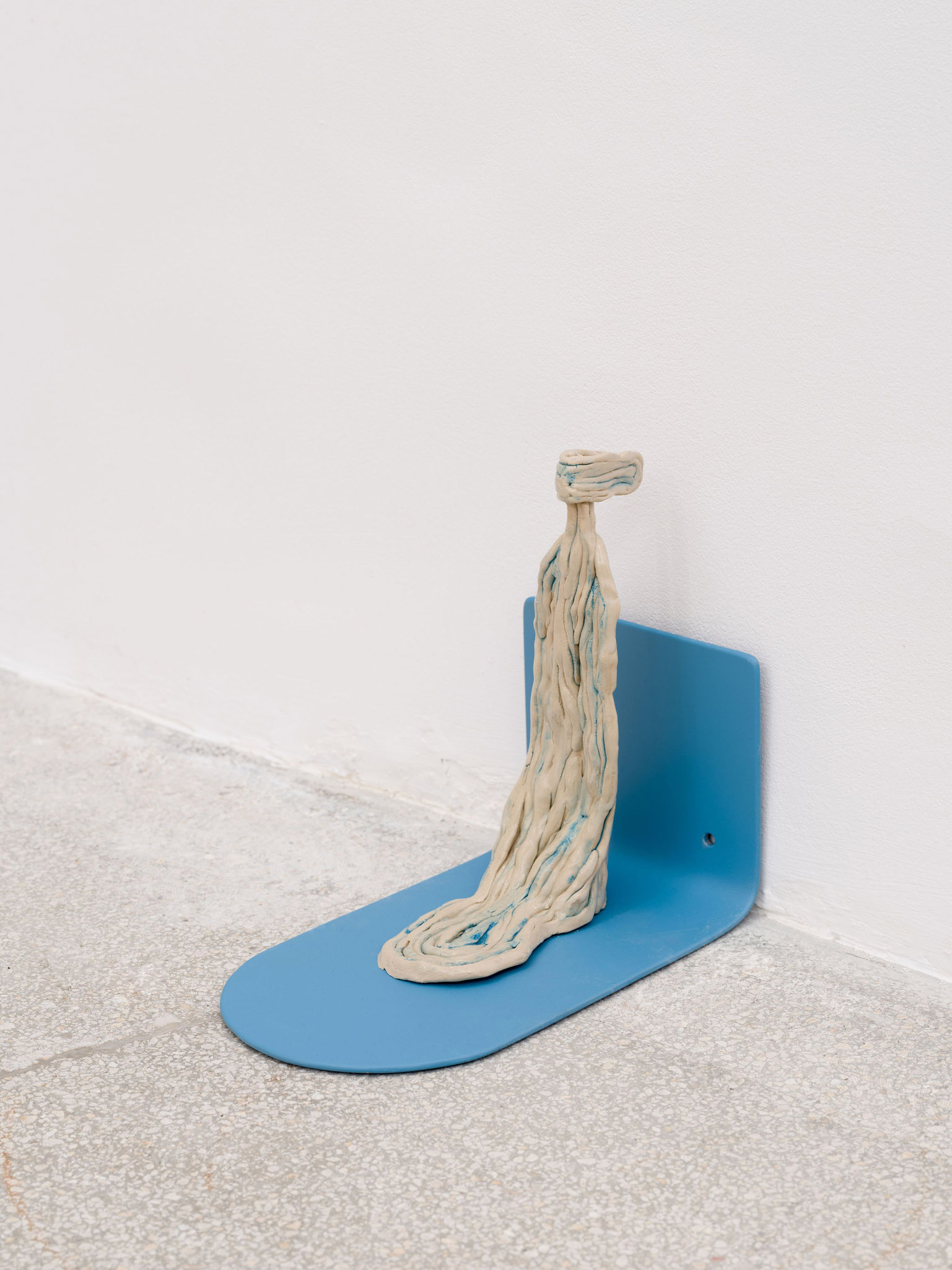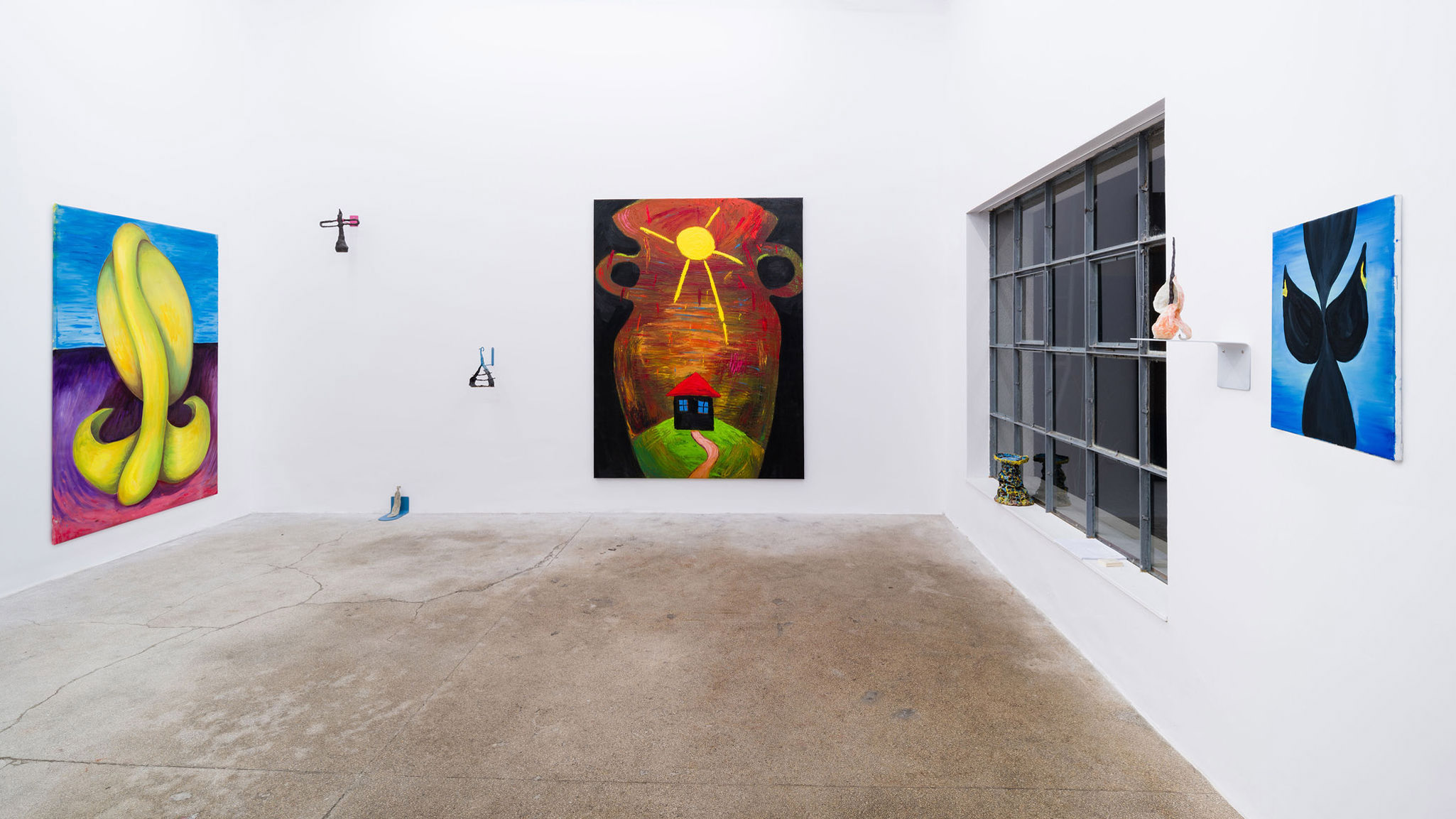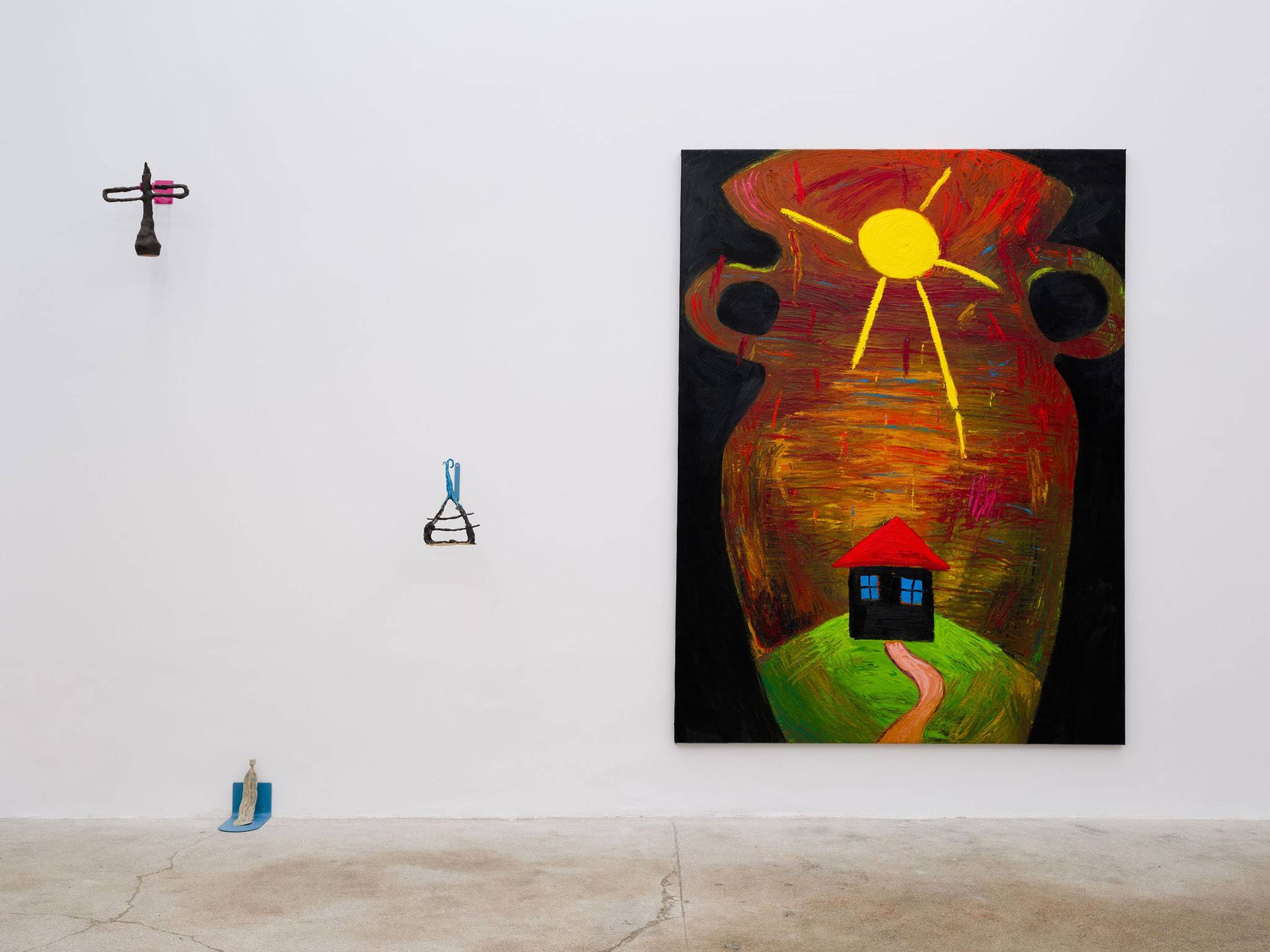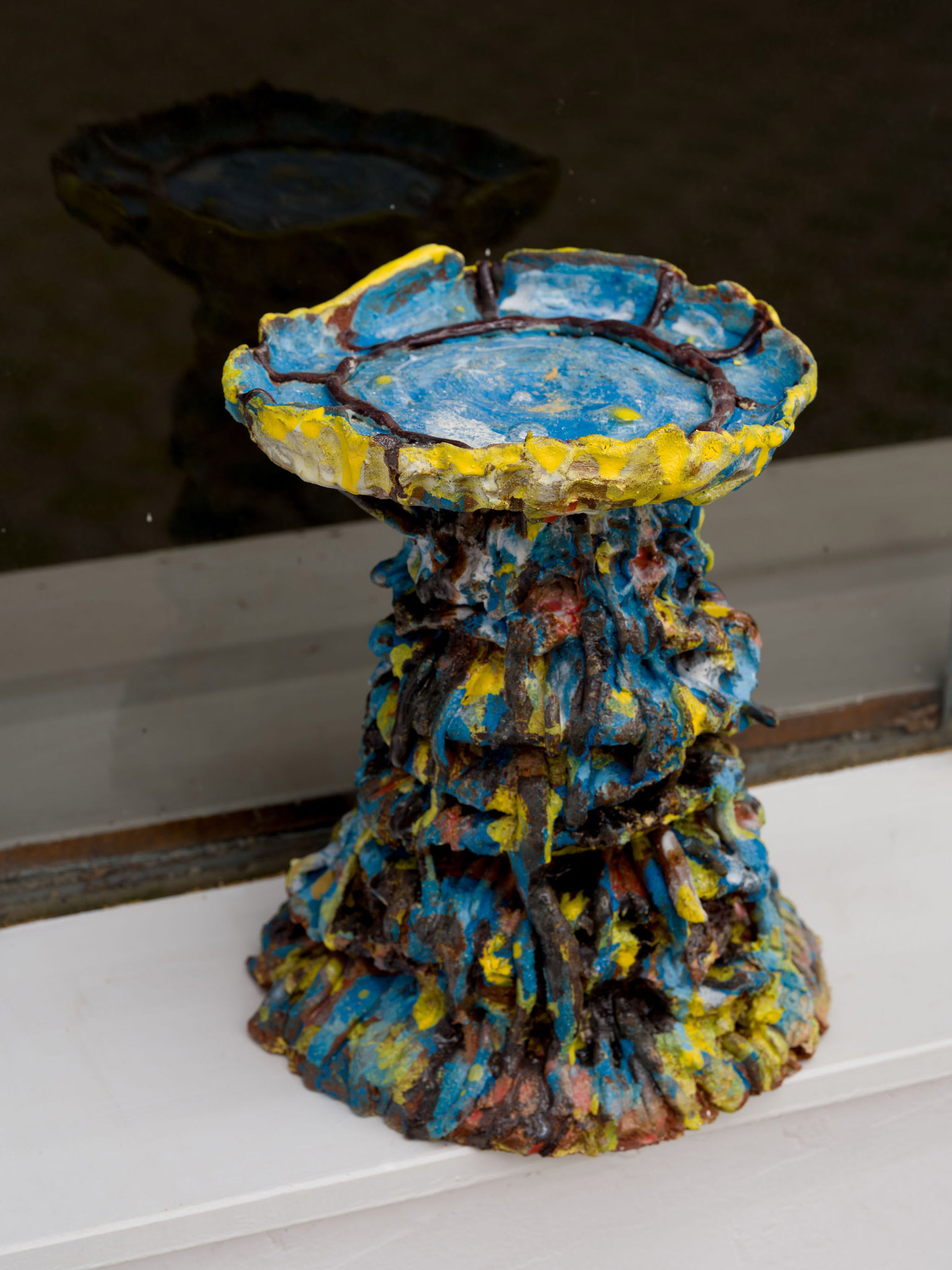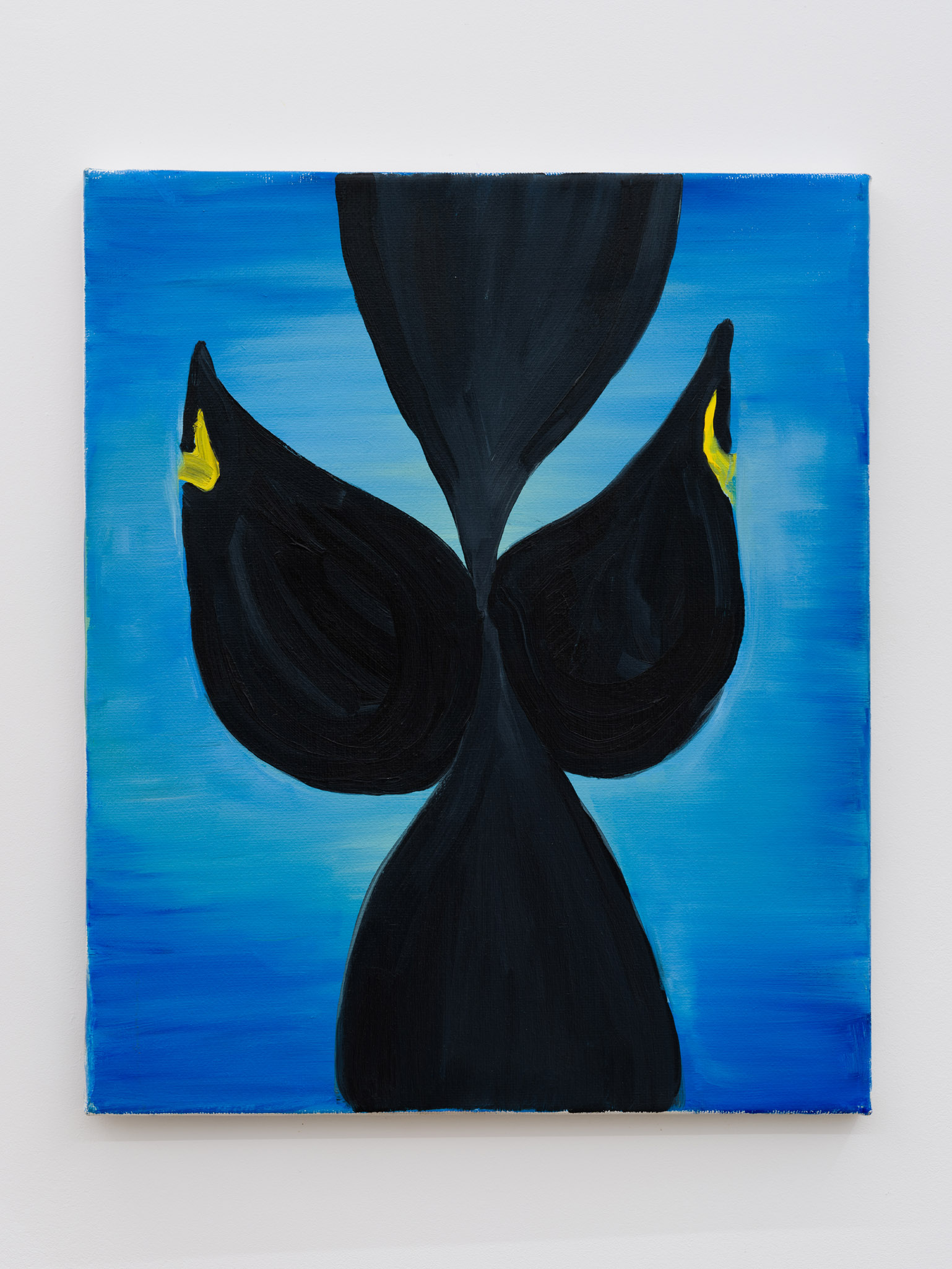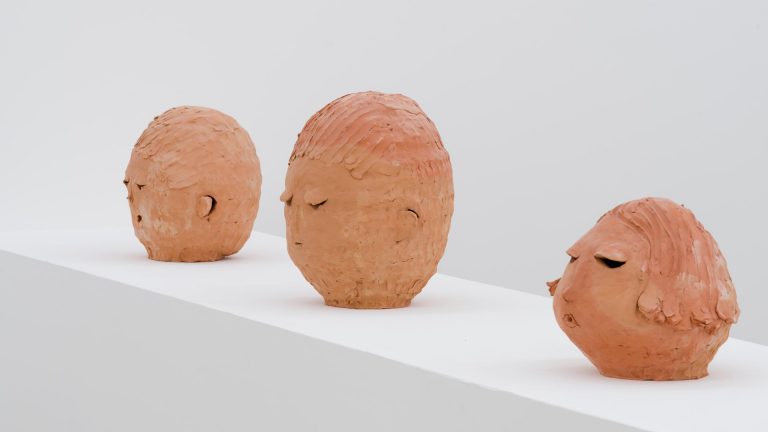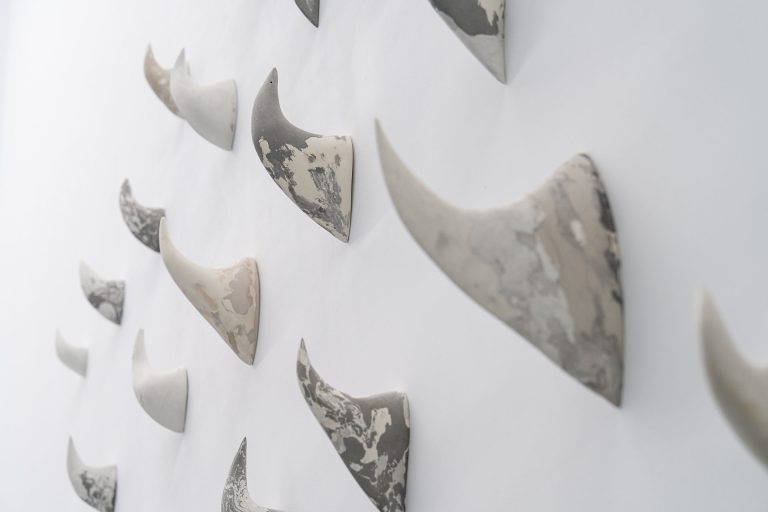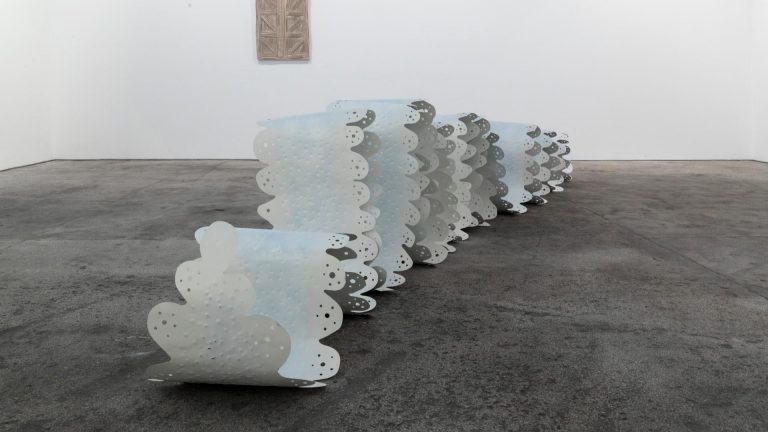Artist: Natalia Lazurca
Exhibition title: waters/lusters/gems
Venue: SABOT, Cluj-Napoca, Romania
Date: February 29 – April 2, 2024
Photography: YAP Studio – Mădălin Mărgăritescu / all images copyright and courtesy of the artist and SABOT, Cluj-Napoca
Inspired by the simplicity of everyday life, by elementary and easily recognizable shapes, unfiltered and free of irony, Natalia Lazurca’s exhibition triggers a strange and somehow dangerous effect on the viewers. It burdens one with the same feeling of shame that everybody has felt after looking for glasses which have been on the nose all along. Or for keys that hid themselves in the pocket. Although associated with old age, these occurrences happen to the young ones as well. The hastiness and desperation of living life to the fullest, the attempt to always discover something fresh and exciting, the daily micro- desperation leads to a bypass of what is essential, useful and alive from our closest proximity. The figurative rendition of early life forms such as primordial slime that created stromatolites, the archaea microbes that built colonies in deep sea hydrothermal vents, or nucleus-lacking cell structures may be reinterpreted as sea anemones, bird nests, embryos, or whatever life form the viewer is most familiar with.
Even if the return to the organic is on the list, the sequence of themes that the viewer is following does not allow a coherent hierarchy at first glance. The enthusiasm provoked by a yellow sun disk, by the spirals of two snail shells or by two sprouting tulip bulbs is hardly homogenous. This unrelated imagery confirms a very true paradox: these themes challenge the viewer to revisit the images, decode and rearrange them in an ever-new sequence, even a long time after the visit to the exhibition. These images block any attempt to be deleted from memory. They cannot be unseen. They stick to the deepest layers of our cortex, somewhere not far from the amygdala, our headquarters for fear. A dangerous game, after all.
All early life forms speak to us about the love of life itself. However, the rendition is not always very far from a primary school best art class award. Funny as everything seems, the decoded message goes toward the inextricable tragedy of life. All these stereotypes, namely love of life, false irony and tragedy, all may be arranged in a triangle. At the geometric center there should be a blank space left for the viewer to fill in. I personally chose “not giving up”. Tomorrow I might change it. (Tudor Vlădescu)

